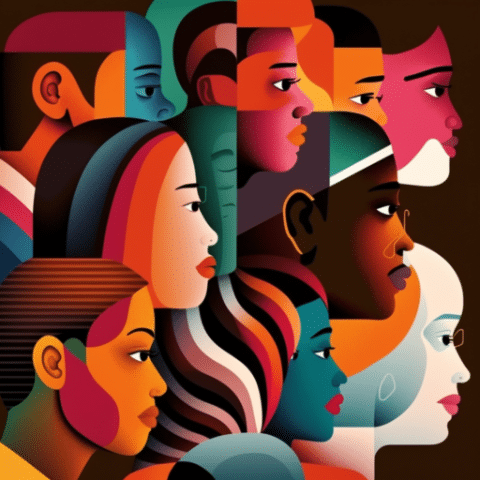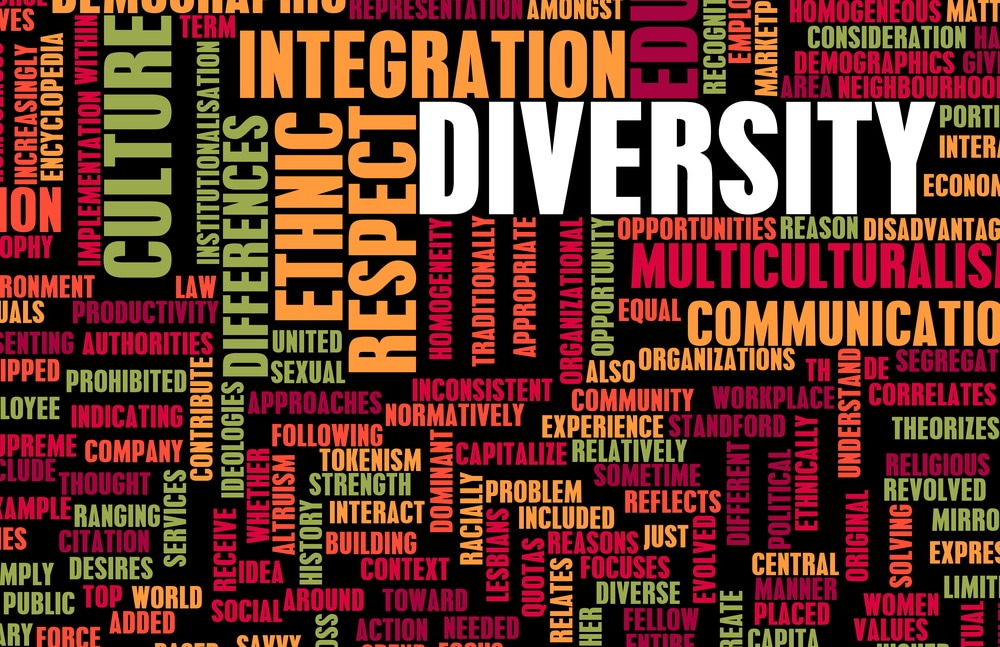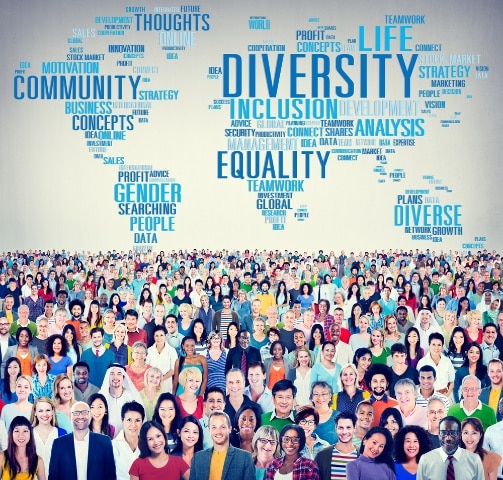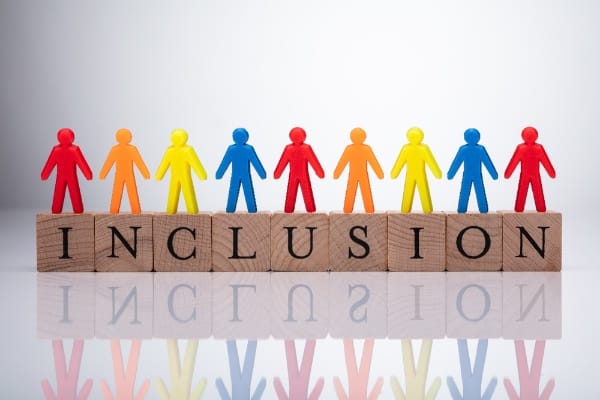The Importance of Diversity and Inclusion Training

In today’s rapidly evolving social landscape, it has become crucial for businesses to foster diverse and inclusive work environments to remain competitive and innovative. Organizations realize the importance of attracting a strong and diverse talent pool and the impact it has on company success.
A dynamic workforce with a workplace culture that values and capitalizes on its employees’ different perspectives can thrive in many ways.
This article describes the importance of diversity and inclusion training in the workplace, its benefits, and the distinct advantage that inclusive organizations have over less diverse companies.
We’ll also consider how companies can implement a practical and effective diversity training program that provides meaningful education. We also have a full-length diversity and inclusion training program that you can check out as well.
What is a Diversity Training Program?
Diversity and inclusion training is a comprehensive education program that raises awareness and promotes understanding and acceptance of diversity in the workplace. To accomplish this, programs teach employees about unconscious biases, prejudices, and stereotypes and how they can impact workplace relationships and employee and company performance.
Diversity and inclusion training is also called DEI training which stands for diversity, equity, and inclusion training.
Programs identify the invisible barriers when employees and companies act on their conscious or unconscious biases. Then, the programs demonstrate strategies to dismantle these invisible barriers and prevent them in the future.
For example, suppose a male hiring manager in a male-dominated industry holds an unconscious bias that he feels he works better with men. In that case, training could demonstrate that this is because he almost exclusively works with men. Specifically, gender diversity training could help this hiring manager:
- Realize their bias
- Develop inclusive thinking
- Implement better hiring practices
Industries with low respective national industry medians for different genders, races, ages, or sexualities are especially at-risk of exhibiting this type of unconscious bias.
These training programs aim to mitigate the risks of implicit biases, discrimination, and other barriers hindering professional and personal growth. Diversity training also enhances cultural competency, understanding, and empathy among employees of different races, ethnic backgrounds, genders, ages, sexual orientations, religions, social and economic statuses, and abilities.

What is the Most Important Purpose of Diversity Training?
The primary purpose of completing a diversity and inclusion training program is to cultivate a work environment where employees thrive. When employees thrive, so does the company.
There are numerous specific improvements a company can experience after completing successful diversity training. The most impactful of these improvements will vary based on the company’s most needed areas of improvement.
The main goals of DEI training programs are to:
- Address and challenge biases
- Develop cultural competence
- Promote empathy
- Improve communication and collaboration skills
- Foster inclusivity
- Enable workplace harmony
- Allow all employees to feel valued and respected
- Prevent discrimination
A crucial purpose of DEI training programs is to address issues of biases and discrimination to prevent issues proactively. A supportive workplace encourages all employees before issues arise, rather than waiting for a complaint.
Finally, there is a significant moral purpose in raising awareness and fighting against exclusion, prejudice, and discrimination. Treating people fairly and respectfully is an ethical way to operate a company.
What is the Benefit of DEI Training?
There are a plethora of impactful, long-lasting business benefits to gain from diversity training. Companies that provide diversity training and implement changes based on the training can quickly understand how it benefits all areas of their business, including team members’ satisfaction, productivity, human resources, legal, marketing, and more.
When the goals of DEI training are accomplished, the same training program results in a company that is empowered to reach its full potential.
Employees that are respected and empowered are driven to work more efficiently and provide more compelling work. Therefore driving innovation, productivity, and interpersonal workplace relationships.

Develops Workplace Sensitivity and Interpersonal Skills
DEI training is a powerful tool for developing skills that help prevent harassment and discrimination in the workplace. By exploring and understanding other people’s perspectives, employees can increase their social and cultural awareness and be more empathic toward others to foster an inclusive work environment.
Learning to understand biases and actively work against them is a skill that can be taught and practiced. Employees having these interpersonal skills can have a massive positive impact on a company’s culture and employees’ dynamics with each other.
Employee satisfaction significantly increases when workers are supported by and get along with their team. Employee resource groups are an important feature of successful programs, as they give workers perpetual access to learning materials and support.
Addresses Unconscious Bias
Unconscious bias is an underlying opinion or attitude based on social stereotypes. This bias unknowingly influences the decisions a person makes and how they behave.
One of the ways diversity training works is by addressing unconscious bias in a company and its employees. By educating employees on what it is and how it impacts their work, training can raise awareness and help prevent it.
Companies and employees learning how not to make decisions based on bias has a distinct advantage compared to expecting issues to resolve themselves.
Many benefits stem from organizations teaching strategies to challenge biases that help the company and also benefit employees in real-world situations.
Increases Team Productivity, Creativity, and Innovation
DEI training is an invaluable investment toward increasing productivity, creativity, and innovation. This training enables cooperation and open-mindedness among employees that help teams work together more effectively. It also encourages employees to share their unique perspectives as they all strive towards the same goal.
Awkwardness encourages group members to withhold ideas that could contribute to the company’s success. With each employee’s knowledge, skills, perspective, and experiences combined into one working environment, companies are better equipped to solve problems with creative solutions.
Diverse companies can increase profitability due to greater levels of productivity, creativity, and innovation.

Improves Talent Recruitment
Agrueably the result of successful diversity training with the longest impact is attracting, hiring, and keeping high-quality team members. The quality of a business’s employees directly contributes to the success and growth of a company.
Without a good reputation for a positive work environment and diverse and inclusive culture, top talent is unlikely to apply for or accept a position. Poor inclusion decreases the available talent pool.
The DEI training provides staff with the tools to identify potential biases in their hiring processes that could lead to unfair treatment or dismissal of certain applicants. This allows companies to tap into a larger pool of potential employees who bring unique perspectives to the table that wouldn’t otherwise be available.
Hiring top talent is essential to business growth and overall success. Addressing the topics of diversity and inclusion gives employers an edge when it comes to competing for top talent by demonstrating they are committed to fostering a positive workplace environment.
Promotes Racial and Ethnic Diversity for a Diverse Workforce
Diversity and inclusion training is an effective way to promote ethnic and racial diversity within an organization. By providing employees with education on diverse cultures, backgrounds, and perspectives, they can be better equipped to work in an environment that celebrates the differences between individuals.
It can also allow for diverse viewpoints to be heard, encouraging collaboration and a better understanding between different groups. Additionally, diversity training helps create an environment where all employees can feel welcomed and respected, which can reduce the incidence of discrimination and harassment in the workplace.
Not only does this broader perspective create a more positive work environment for underrepresented groups, but a study by McKinsey & Company revealed that more diverse companies have a higher financial return than the average for their respective industry. When it comes to innovation, non-homogenous teams perform significantly better.
Specifically, those in the top quartile for racial and ethnic diversity were 35% more likely to show financial returns above the national industry median. Excluding employees on the grounds of race or religion vastly decreases a company’s earning potential.
This data supports the idea that a diverse workforce can bring great value to businesses, as it can help drive innovation and creativity while also helping boost financial performance.
Boosts Employee Retention
Employee retention is crucial for a future-proof business, as it helps to create a stable and effective working environment. Retaining highly skilled workers with highly-valued qualities over time usually equates to greater profits due to fewer hiring expenses, such as recruitment costs and training costs.
Companies that strive for an environment in which employees feel valued and respected can expect to see an improvement in employee turnover rates. An inclusive workplace fosters an environment where everyone is encouraged to bring their authentic selves to work, allowing them to build meaningful relationships with their colleagues.
Developing workplace culture means retaining productive employees with different perspectives that can positively contribute to the company.
Ultimately, diversity and inclusion training helps to create a culture where employees feel comfortable and build a workplace where employees want to stay long-term.

Contributes to Company Image and Business Reputation
The modern consumer is evolving, and it is becoming more mainstream for consumers to make decisions based on ethics. Consumers expect companies to be socially responsible and prove that to the world.
Diversity and inclusion training is an important component of a company’s overall strategy to build a positive image and reputation. It helps companies create an inclusive culture, which reduces the potential for discrimination, promotes respect between all members of the organization, and encourages collaboration and innovation.
With this, companies can demonstrate their commitment to workplace equality and demonstrate they are taking proactive steps to ensure that all employees feel respected and valued regardless of personal characteristics to differences.
Ultimately, investing in diversity and inclusion training can help enhance a company’s brand image by showing customers that it is committed to creating an equitable work environment for all its employees and supporting individuals from diverse backgrounds.
Avoids Legal Issues
Organizations providing a safe and non-discriminatory workplace for employers can help them ensure they stay compliant with the law and avoid costly legal issues. Diversity training helps employees understand their legal rights and how to identify signs of discrimination or harassment in the workplace.
In DEI training, companies can be taught how to implement and enforce policies on equal employment opportunity, affirmative action, and non-discrimination. Having these policies in place enough to avoid litigation, a company and its employees must abide by the anti-discrimination guidelines.
By participating in this type of training, employees can become aware of potential issues before they arise so that steps can be taken to address them early on. Furthermore, if a complaint is filed against the company or an employee, proof of training can demonstrate that the company took proactive measures to prevent any type of discrimination or harassment.

How To Implement Diversity Training in the Modern Workplace
To accomplish the goals of diversity training, leadership must make a commitment to communicating and enforcing the strategies and practices learned in diversity training.
Leadership must establish clear expectations for their teams and create a culture of inclusion that encourages open dialogue among all employees. Diversity training should be structured to ensure everyone is included and given an equitable opportunity to learn and grow.
Ultimately, companies need to start by evaluating their specific needs and areas of improvement. Companies must analyze whether they have diverse teams, cultural competency, and unbiased hiring practices. Once they understand where they need to improve, they can develop a plan for a successful training program.
The following are specific ways that organizations can implement DEI training.
- Bring in outside experts to teach DEI training programs.
- Ask outside figures with relevant experience to speak or hold a seminar.
- Use interactive exercises, such as role-playing scenarios and team-building exercises.
- Demonstrate examples and present case studies.
- Provide ongoing education, such as periodic workshops and online resources that employees can access at any time to refresh their knowledge.
- Require new employees to complete existing DEI training.
- Implement diversity officers or diversity task forces to teach DEI and encourage a positive, supportive workplace.
- Explore mentorship programs in which members of underrepresented groups can share their experiences and perspectives.
- Provide additional training for human resource management employees to empower workplace sensitivity, encourage inclusive thinking, and enforce anti-discrimination.
By providing these resources and initiatives, companies can develop a strong foundation for fostering an inclusive environment that celebrates diverse workplaces while empowering employees to work together with respect and understanding.
Make Diversity Training a Continuous Learning Process
To fully benefit from diversity training, companies should emphasize the continuous learning process of fostering an inclusive workplace. Additionally, companies should implement a method for ongoing feedback to measure their initiatives’ effectiveness and ensure that employees are comfortable with the material they have learned. By investing in a comprehensive approach to diversity training, organizations will be better equipped to create an inclusive environment and foster meaningful change within their workforce.